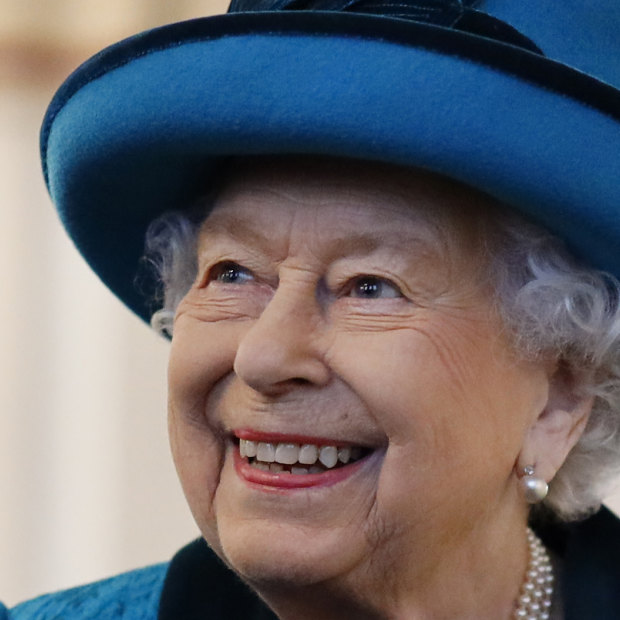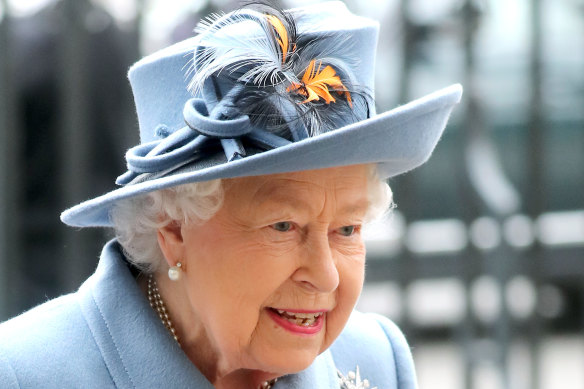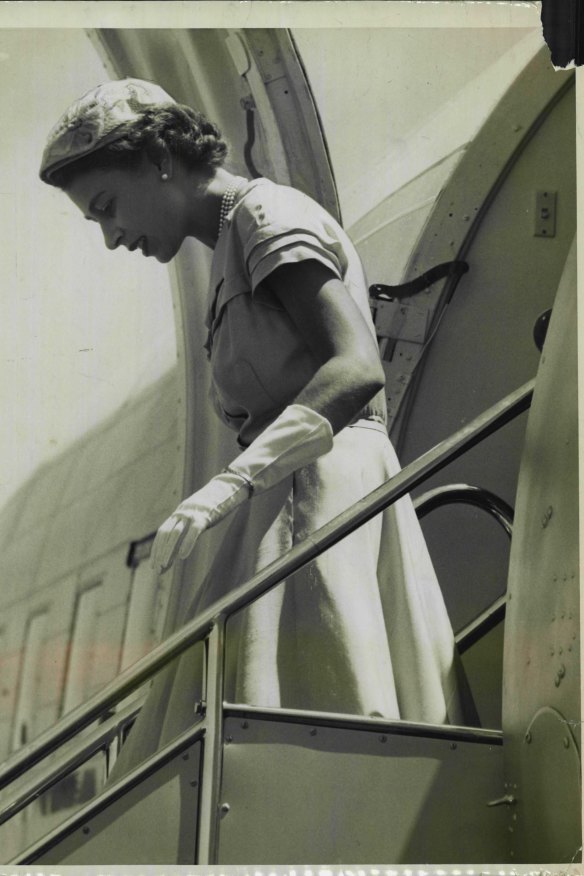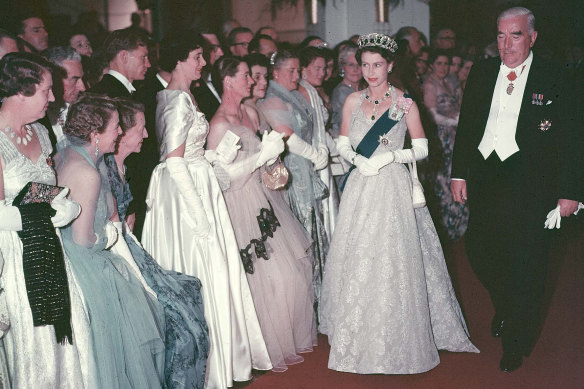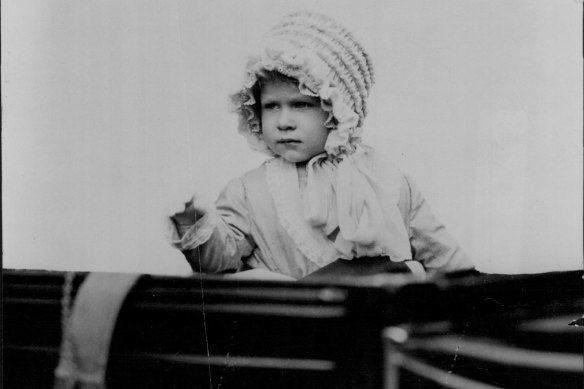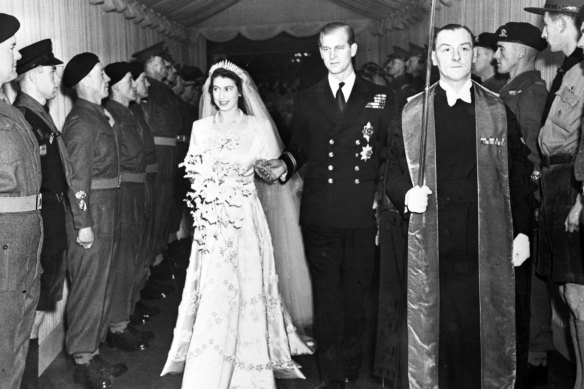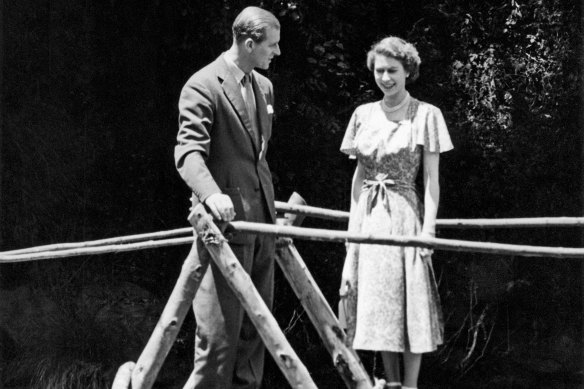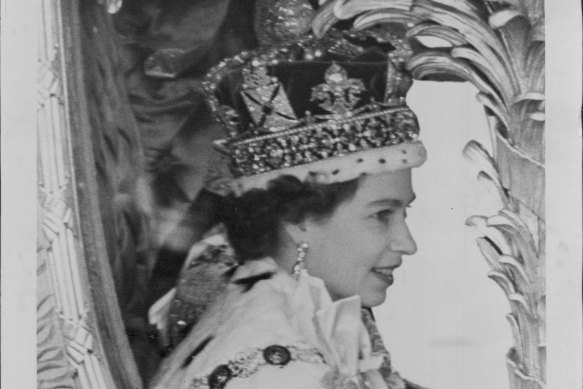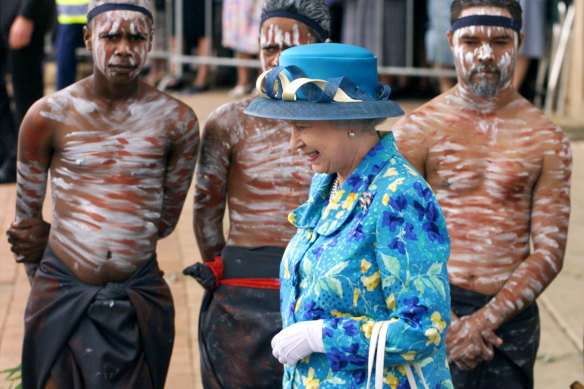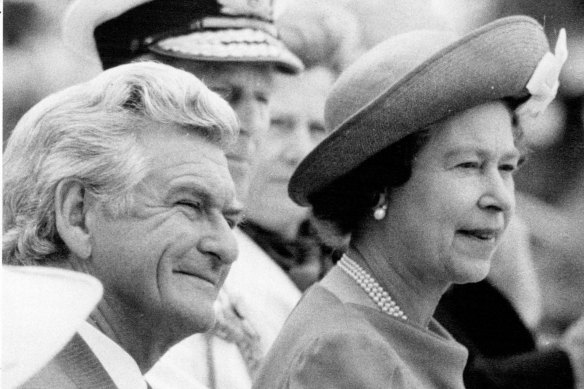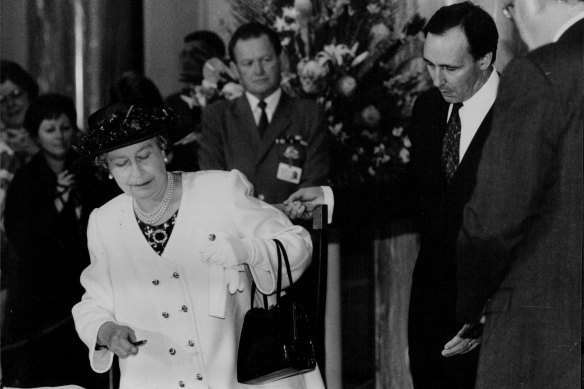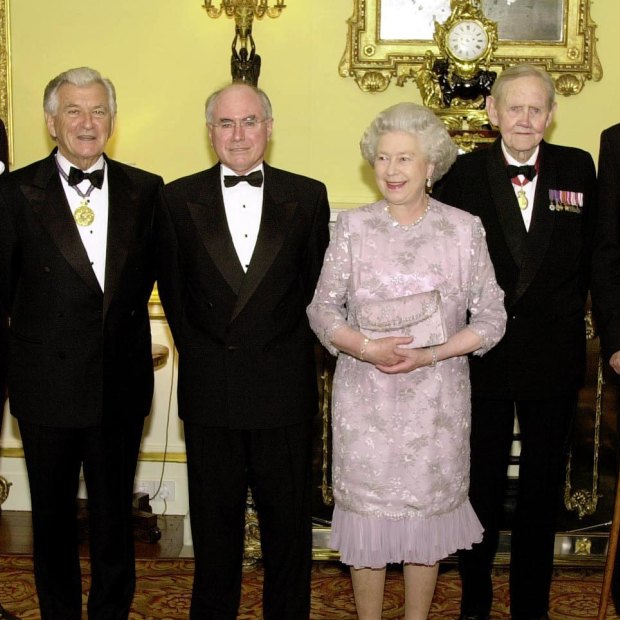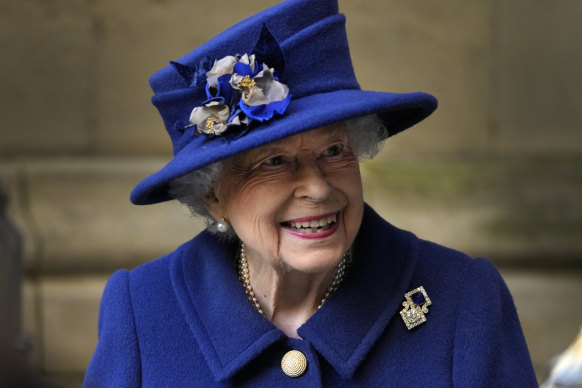By Mark McGinness
The Queen has spoken publicly to support the media.Credit:AP
On her 21st birthday in South Africa, five years before she became queen, Princess Elizabeth pledged “my whole life, however long or short, will be devoted to your service and the service of our great imperial family”. By all accounts, she was as good as her word.
Our great imperial family is, rather like the Holy Roman Empire, now neither great, imperial nor a family. But the 56-nation Commonwealth – just over a quarter of the membership of the UN – survives and recognises the monarch as its head. Indeed, a dozen nations, Australia included, have decided that, as one of her biographers Robert Lacey put it, “a time-share monarchy is preferable to no monarchy at all”.
HM Queen Elizabeth II attends the Commonwealth Day Service at Westminster Abbey in March 2020, in London.Credit:Getty Images
This was put to the test in the 1999 referendum, which proved as much a measure of the devotion to, or at least admiration for, the Queen personally as confirmation of the unsatisfactory model proposed. Buckingham Palace’s official reaction to the “No” result was to say: “For some, while it has been clear that many Australians wanted constitutional change, much of the debate has been what that change should be.”
Lacey claims Prince Philip’s immediate response to the vote was: “What’s the matter with these people? Can’t they see what’s good for them?” The Queen’s characteristically more measured reaction came in 2000 when she visited Australia (having avoided visiting for eight years while the debate took place): “I have always made it clear that the future of the monarchy in Australia is an issue for you, the Australian people, and you alone to decide by democratic and constitutional means. It should not be otherwise.” And so the link endures.
To keep the widespread imperial family connected, the Queen travelled. In fact, few have travelled as far, so often and for so long – from that first trip abroad, to South Africa, with her parents in 1947, to her last, a visit to Malta in 2015. Her Australian visits spanned six decades, from 1954 to 2011.
These visits were supplemented by her mother, sister, uncle, aunts, cousins, children and grandchildren. They were greeted with varying degrees of enthusiasm but, in the wake of every visit, especially from the Queen, the popularity of the monarch and support for the status quo rose. More significantly, her heir, Charles, his heir, William, and his heir, George – the next three generations – have also come to meet their future subjects.
First steps in Australia as HM Queen: Elizabeth II alights from her plane at Mascot in February 1954.Credit:SMH
GREAT SOUTHERN LANDING
The whole country came alive in 1954 for the first visit by a reigning sovereign. It was estimated that 6 million of the Australian population of 9 million saw the Queen and the Duke of Edinburgh during their tour, which took in seven capital cities and 70 towns in 58 days.
As the historian Sir Charles Petrie wrote of the Queen: “For the first few years of her reign, she was the subject of adulation unparalleled since the days of Louis XIV.”
The young Queen Elizabeth with Sir Robert Menzies in Canberra in 1954 during her first tour.Credit:National Archives
Prince Philip recalled: “The level of adulation, you wouldn’t believe it. It could have been corroding. It would have been very easy to play to the gallery, but I took a conscious decision not to do that. Safer not to be too popular. You can’t fall too far.” Here, perhaps, is the key to the longevity of their marriage and the success of the Queen’s reign.
In September 1981, she came to Australia for the eighth time. In between, the tours had become briefer, covered less territory and generally revolved around one significant event, whether it was the 1981 Commonwealth Heads of Government meeting, the earlier Captain Cook celebrations or the opening of Sydney’s Opera House or Canberra’s High Court.
These tours set out to be deliberately less formal. However, there were limits. The Canberra program of the 1963 tour could still use the notation “T”, for tiaras, as a guide for guests.
A more worldly, savvier court evolved with the appointment of West Australian Bill (later Sir William) Heseltine to the royal household in 1965. This led to a more positive response to the media and was reflected in the Queen’s itineraries. The monarch came to drink billy tea at a Snowy Mountains picnic and to enjoy a barbecue under the star-studded night sky of the Northern Territory.
She called on a family on the 14th-floor of Block B, John Northcott Place, Surry Hills, Sydney, and on a leading Aboriginal householder in Darwin. She went to the races, which she naturally enjoyed, to rugby league games, which she capably pretended to enjoy, and to cricket, where she good-humouredly turned down Dennis Lillee’s request for an autograph.
THE ACCIDENTAL HEIR
Despite the hopes, hers was never to be a New Elizabethan Age. The fabric of Britain in 1952 was still rent by the Second World War and, as it recovered, Europe emerged and the empire crumbled. But what arose from the remnants of the empire was the Commonwealth, and its survival, against extraordinary odds, is one of the Queen’s greatest achievements.
Of course, Elizabeth was never meant to be queen. Born on April 21, 1926, Princess Elizabeth Alexandra Mary was the first of two daughters of Albert (Bertie), Duke of York, second son of George V and Queen Mary. Her mother, formerly Lady Elizabeth Bowes-Lyon, was the youngest daughter of the 13th Earl of Strathmore, from a venerable line of Scottish nobility, but the first non-royal wife since James II wed Anne Hyde.
Baby Princess Elizabeth, daughter of the Duke and Duchess of York, in London in 1928.Credit:Reuters
Had young Elizabeth’s Uncle David, Prince of Wales, married conventionally, she would have enjoyed being a “minor royal” like her cousin Princess Alexandra. But when, in 1936, within 12 months of George V’s death, David, as Edward VIII, decided to abdicate to marry divorcee Wallis Simpson, Bertie, a poor public speaker and forever in the shade of his dazzling brother, reluctantly became king, taking his father’s name.
Elizabeth was 10 when she realised her fate. When a footman brought the news to the young princesses that their beloved papa was king, her sister Margaret asked: “Does that mean you will have to be the next queen?”
“Yes, someday,” Elizabeth replied. “Poor you,” countered Margaret.
Biographers claim that every night thereafter Elizabeth prayed for a brother.
As for education, George V is reported to have said: “Teach them to write a decent hand, that’s all I ask.”
The sisters were not just dressed but taught alike – French and German; singing, dancing and music. Elizabeth became a good swimmer, and she joined the Girl Guides.
When Queen Mary remonstrated with her daughter-in-law about the princesses’ confined instruction, the Queen Mother said airily: “I don’t know what she meant. After all, I and my sisters only had governesses, and we all married well – one of us very well.”
Elizabeth, as heir, was given tutorials in constitutional history from Henry Marten, vice-provost of Eton, which would prepare her for the red despatch boxes.
A DASHING PRINCE
Her first significant encounter with her future husband came in July 1939, just before the outbreak of war, when Elizabeth and her parents visited Dartmouth.
The 19-year-old naval cadet, Prince Philip of Greece, was her third cousin, and more significantly, the nephew of Lord Louis Mountbatten. He made quite an impression.
While Philip had a distinguished war, Elizabeth lived quietly behind the battlements of Windsor Castle, but she did join (rather against the king’s wishes) the Auxiliary Territorials as a second lieutenant and learnt to drive cars, ambulances and heavy trucks.
By 1946, her governess, Marion Crawford (Crawfie), reported that Elizabeth was incessantly playing People Will Say We’re in Love from the musical Oklahoma. Her parents were not so enamoured. The king insisted on a delay until Elizabeth was 21, and took both daughters (“We Four”) on a tour of South Africa. But the princess was determined and love won out.
During 1947, Philip shed his embarrassingly German family name of Schleswig-Holstein-Sonderburg-Glucksburg, disclaimed his right to the Greek throne, converted to Anglicanism and became naturalised as Lieutenant Philip Mountbatten. Just before November 20, 1947, the wedding day, the king made him Duke of Edinburgh and a Knight of the Garter.
Princess Elizabeth and her husband, the Duke of Edinburgh, leave Westminster Abbey, London, following their wedding service in November 20, 1947.Credit:AP
The young couple’s two years in Malta, where Philip had his first – and last – command, would be remembered as idyllic. Here they felt almost like any other naval officer and his wife. The princess had produced an heir, Charles, within 12 months of marriage, and a daughter, Anne, less than two years later.
By 1951, George VI’s health meant a return to England, and Elizabeth became a full-time heiress.
‘THIS HEAVY TASK’
Princess Elizabeth and the Duke of Edinburgh at Treetops, Kenya, in February 1952. Credit:Getty Images
On February 6, 1952, Elizabeth and Philip were in Kenya en route to Australia, staying at the famous Treetops Hotel. She was watching the sun rise from a platform in the trees as an eagle soared above them. It was thought that at that moment her beloved father died in his sleep at Sandringham. So she had climbed a mgugu tree as a princess and the following morning descended as a queen.
A day later, the 25-year-old monarch arrived in London, dressed in black, and was greeted by prime minister Winston Churchill, who had served as a soldier in the reign of her great-great-grandmother, Victoria.
Her youth and composure prompted hopes of a new era – not Victorian but a second Elizabethan Age. Interestingly, a tree featured in the accession of Elizabeth I, too. The first Elizabeth, also 25, sat beneath an oak at Hatfield, and when told she was queen, replied: “This is the Lord’s doing, and it is marvellous in our eyes.”
As the second Elizabeth took the throne, she told her subjects: “I pray that God will help me to discharge worthily this heavy task that has been laid upon me so early in my life.”
The newly crowned Queen during her processional drive after her coronation on June 2, 1953.Credit:Fox Photos
At the coronation, in June 1953, the 99th Archbishop of Canterbury, Geoffrey Fisher, placed the King Edward Crown on the young head of Elizabeth II, anointing her with the ancient words: “As kings, priests and prophets were anointed, and as Solomon was anointed king by Zadok the priest … so be thou anointed, blessed and consecrated Queen over the peoples whom the Lord thy God hath given thee to rule.”
In September 2015, her 63 years and 216 days on the throne broke the record of the longest reign by a British monarch, set by Queen Victoria.
Elizabeth II spent most of those 23,450 days as monarch doing her duty. She welcomed the Romanian Ceausescus as house guests at Buckingham Palace; she shook the hand of Irish republican Martin McGuinness; she hosted Paul Keating to a barbecue at Balmoral; and listened to Margaret Thatcher once a week for 11½ years.
FAMILY TROUBLES
After Anne, the Queen would wait a decade before the birth of Andrew, Duke of York, in 1960. Edward, Earl of Wessex, arrived in 1964 to complete the family. They all survive their mother – together with eight grandchildren and 12 great-grandchildren. So the succession is assured.
In his joint biography, Philip and Elizabeth (2005), Gyles Brandreth summed up the royal relationship at home as “she wears the Crown; he wears the trousers”. The Queen, a loving but undemonstrative mother, would avoid confrontation, and leave it to Philip to make decisions for the family.
The duke – a restless, vigorous, combative spirit, whose abiding purpose was “to support the Queen” – stood by his wife for seven decades. He died two months short of his centenary in Windsor on April 9, 2021. This was a grievous blow, but those concerned that Elizabeth would follow the widowed Victoria and retreat into seclusion should have known their sovereign was made of stronger stuff.
She famously referred to 1992 as her annus horribilis, but as one of her biographers, Ian Bradley, has said, most of the ’90s were pretty horribilis: Diana’s “Squidgygate” and Charles’ “Camillagate” tapes, his book, her book, and their divorce; the Duchess of York’s wet toes, and the Yorks’ divorce; the Princess Royal’s divorce and her escape to Scotland to remarry; and the fire at Windsor Castle.
None of these episodes could be said to be the Queen’s fault, and yet she was engulfed by them all – the price, of course, of the hereditary principle.
Queen Elizabeth walks past traditional Aboriginal dancers after visiting a radio station in Bourke March 22, 2000. Credit:Reuters
Early 2020 brought more grief with divorce announcements by her eldest grandson, Peter Philips, and her nephew, David (Lord Snowdon), but given their remoteness from the throne, the sorrow remained essentially a private one.
Further challenges came in 2021 when the Duke and Duchess of Sussex decided to distance themselves from the royal family and settle in California, where they gave a controversial interview to Oprah Winfrey. However, a month later, echoing his great-granduncle Edward, Duke of Windsor, seven decades earlier, Prince Harry came home, without his wife, to attend his grandfather’s funeral.
Both Harry and Megan, who happened to be in the UK, travelled to Balmoral on Thursday to be at the Queen’s bedside before she died.
‘ALWAYS ROYAL’
But what of the woman behind the tiara? The writer A.N. Wilson claimed in his book After The Victorians (2005) that the Queen was unknowable. He considered the closest and most vivid portrait among a score of biographies was contained in The Little Princesses (1950) by their nanny, Crawfie.
She wrote of 10-year-old Lilibet, “self-contained and obsessively neat, getting up in the middle of the night to tidy her shoes – and the piety and sense of duty which would not have been out of place in a medieval or 17th-century monarch … [and] not a single instance of the child allowing her guard to drop. She is always royal.”
During an air raid at Windsor Castle, with the governor and officials anxiously waiting in the shelter for their charges to join them, Lilibet calmly tells her nanny through the bedroom door: “We’re dressing, Crawfie. We must dress.”
For Elizabeth II, duty was always at the expense of emotion. To show emotion was to expose herself and compromise her role, even in private. A recurring vignette in accounts of her life is the story of a courtier friend receiving a short and rather formal letter from her on the death of a family member; yet the death of a dog provoked a four-page hand-written letter of real sympathy and feeling.
Behind an occasionally glum visage there was a droll sense of humour, a hint of her mother’s wit. At a garden party, a young guest’s mobile phone began to ring as she was speaking to the Queen. The girl was in an agony of embarrassment, unrelieved by the Queen saying: “You’d better answer that. It might be someone important.”
Her gift as a mimic was also unexpected. She apparently did a brilliant Bob Hawke, and her Boris Yeltsin was superb.
Bob Hawke with the Queen at the unveiling of the National Naval Memorial in Canberra in March 1986. Credit:SMH
The only occasion where her unblemished record was in danger of being lost was the aftermath of the death of Princess Diana in 1997. As hysterical Britons left bouquets by the thousand at royal residences throughout the kingdom (one paper dubbed it “floral fascism”), the Queen remained remote at Balmoral. Her priority, she thought, was to her grandsons who had just lost their mother. She considered decisions on the obsequies of the divorced Diana were a matter for the Spencer family.
The Queen’s subjects thought otherwise and, inflamed by a baying press, with headlines imploring “Ma’am, show us you care”, they wanted their sovereign in London, grieving with them. At the urging of her courtiers and on the advice of her prime minister, she returned early to London, allowed the Union Jack to fly at half-mast, and broadcast to her people. “What I say to you now as your Queen and as a grandmother, I say from my heart.” All was well – the monarchy was saved and, as one royal watcher put it, “the Queen was back in charge”.
The Queen had spoken about “lessons learnt”, and she clearly had learnt from this catastrophe in responding to the Sussexes’ decision in 2019 that they were “stepping back” from royal life and planning a new life in North America. Although the resolution of their new status was swift and firm, the Queen’s public response appeared to come from the heart – more grandmother than monarch.
REIGN NOT RULE
Lord Hailsham, the former lord chancellor, once observed that while the US system of government was “an elective monarchy with a king who rules … but does not reign”, the British system was “a republic with a hereditary life president who … reigns but does not rule”.
Another comparison is that of a non-executive chairman or chairwoman. The presence of a chairman guarantees balance. The chairman may advise, recall past failures – and successes – represent the company at functions and listen to its problems.
Then prime minister Paul Keating with the Queen at Parliament House, Canberra, in February 1992. Credit:Andrew Taylor
In Britain, if the Queen was the chairwoman, her chief executive was the prime minister. She worked with 15 of them – her first, Churchill, was born in 1874; her most recent, Liz Truss, born in 1975, was not even alive when Elizabeth became queen.
Every week, chief executive met chairwoman at her palace or castle, where discretion – on both sides – was absolute. Prime ministers, without the slightest fear of jealousy or betrayal, could unburden themselves, and it is said they all came to look forward to these weekly encounters.
James Callaghan, prime minister from 1976 to 1979, observed: “The Queen offers friendliness; not friendship.” But what was actually discussed and what the Queen thought of her prime ministers remains a mystery. There were occasional leaks – that Edward Heath was cold, and relations with Margaret Thatcher were frosty – but as no courtiers or secretaries were present, this can only be guessed at.
The Queen’s role was essentially a passive one – she did not criticise, lecture or dictate, but she could and did question. It is said that when, in 1956, Anthony Eden told the Queen about the government’s intention to intervene over Suez, she apparently said, “Are you sure?” For Her Majesty, this was the equivalent of “Are you mad?”
In Australia, she was represented by 16 governors-general, from Sir William McKell to General David Hurley, while 16 prime ministers served during her reign, from Robert Menzies to Anthony Albanese. Over the seven decades of her reign, the role of the viceroy in the political process grew as the sovereign’s faded, saving her from controversy.
A Buckingham Palace event in July 2000 to commemorate the centenary of modern Australia. Queen Elizabeth with Australian prime ministers (left to right) Malcolm Fraser, Bob Hawke, John Howard, John Gorton and Gough Whitlam.Credit:AP
The biggest Australian test came on November 11, 1975, with Sir John Kerr’s dismissal of prime minister Gough Whitlam. Again, the monarchy survived chiefly because the Queen was not directly engaged by the main players and was not asked to take a view, ensuring her continued popularity in Australia and Whitlam’s abiding admiration.
Kerr later claimed in his memoirs he had told the Queen the reason he did not advise her was: “Governor-generals are expendable. The Queen is not.” In any case, it added momentum to the push for a republic. The Whitlam government had already confirmed Advance Australia Fair as the national anthem, and inaugurated the Order of Australia. With all the precision of a silk, Whitlam had even suggested that “the second” should be deleted from the Queen’s royal title as Australia had never had Elizabeth I as its sovereign. This was firmly quashed.
The Queen leaves after attending a Service of Thanksgiving to mark the Centenary of the Royal British Legion at Westminster Abbey in London, October 12, 2021.Credit:AP
In May this year, struggling with mobility issues, the Queen did not attend the opening of Parliament for the third time ever in her reign. (The first two occasions were in 1959 and 1963 when she was pregnant with Prince Andrew and Prince Edward respectively. In 2022, the Prince of Wales read The Queen’s speech on Her Majesty’s behalf, with The Duke of Cambridge also in attendance.
In June, amid four days of celebrations for the Platinum Jubilee, evidence of the Queen’s poor state of health became more apparent. On Thursday June 2 she made two appearances on the Buckingham Palace balcony for a military parade and flypast. But the palace later announced that while she “greatly enjoyed” the parade, she “did experience some discomfort” and would miss Friday’s thanksgiving service at St. Paul’s Cathedral.
She pulled out of a remote Privy Council meeting on Wednesday after doctors ordered her to rest.
“Following further evaluation this morning, the Queen’s doctors are concerned for Her Majesty’s health and have recommended she remain under medical supervision,” the palace said.
“The Queen remains comfortable and at Balmoral.”
Charles and Camilla were staying nearby at Birkhall on the royal estate and quickly arrived to be with her.
All of the Queen’s children then quickly gathered at Balmoral to be by her bedside on her last day and her death was announced at 6.30pm London time (3.30pm AEST).
On Monday June 13, the Queen had reigned for 70 years and 127 days, surpassing the rule of the late King Bhumibol Adulyadej of Thailand who reigned for 70 years and 126 days. It made her the second-longest reigning monarch in history, after Louis XIV of France.
Her reign at the time of her death was 70 years and 215 days.
The coolness, sagacity and restraint of Elizabeth II were matched by her constancy and diligence – day in and day out, a model constitutional monarch. It is impossible to imagine that she could be matched in this, or any other, century.
Mark McGinness
Most Viewed in National
Source: Read Full Article
